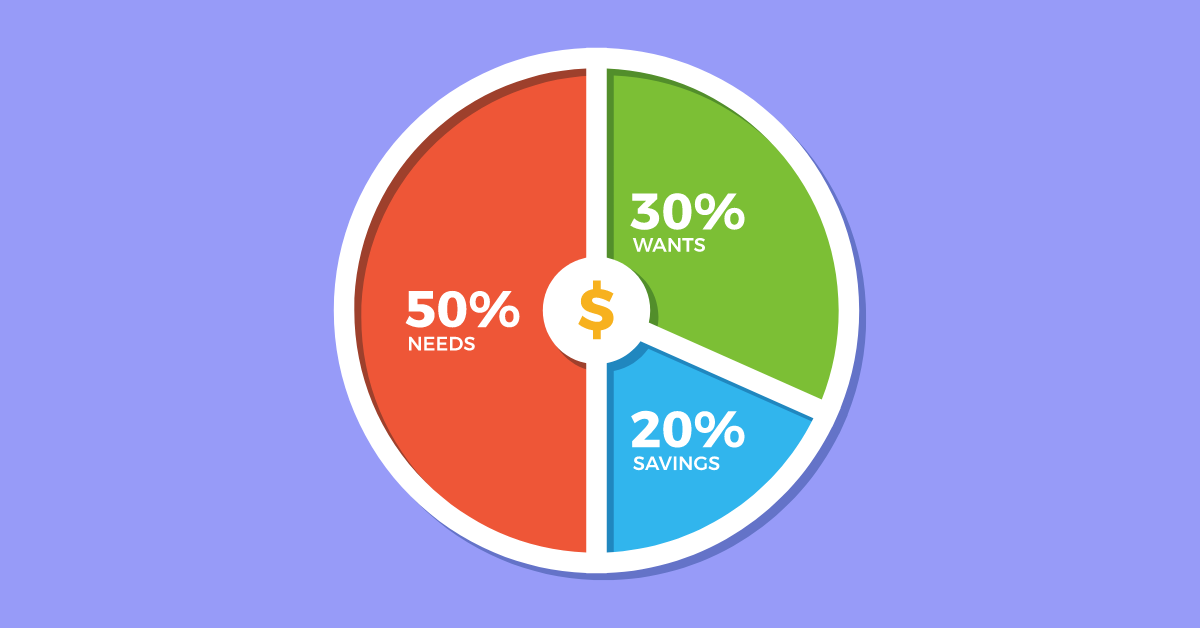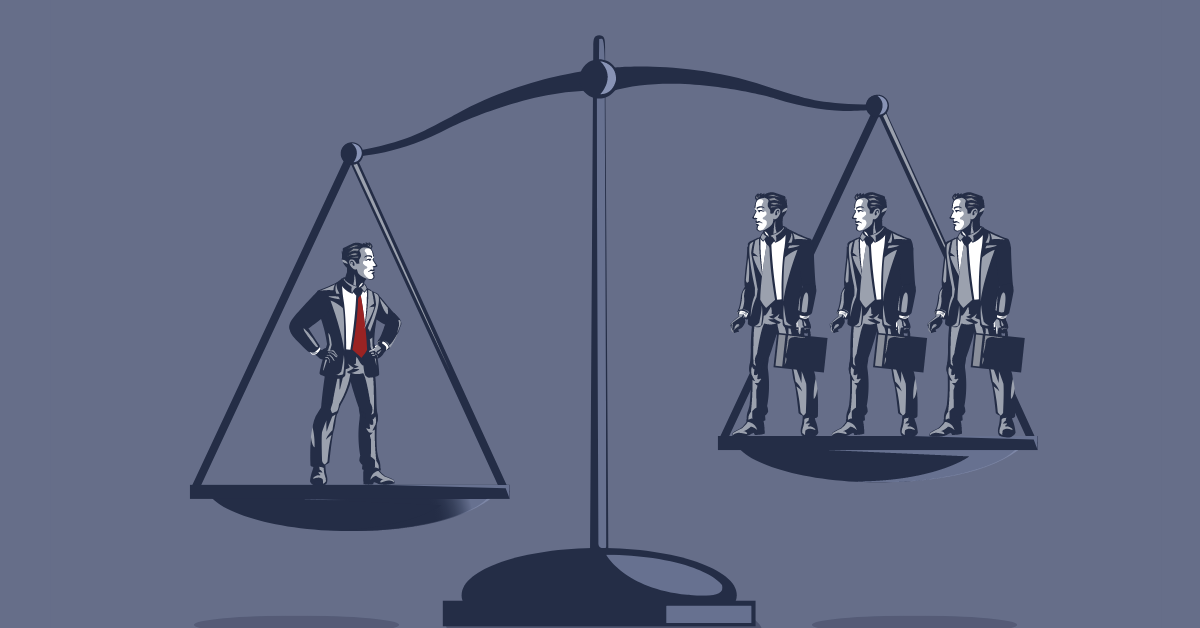Woosh! The money is gone. It’s the third week of the month and you’ve maxed out your credit card. Now is the time to turn to the last few packets of instant noodles instead of ordering in. That big fat portfolio you wanted to have and the backpacking trip to Europe that you were dreaming of seems like a world away.
A 2021 Refyne-EY survey suggested that 81% of the folks surveyed exhausted their salary before month-end. Relatable much? Some of us make a budget, yet something or the other derails it, in spite of keeping a hawk eye on expenses. Yeah, that medical emergency, a cousin’s wedding, surprise visits from near and dear ones, getting sloshed, and so on.
However, we came across a budgeting rule that can actually stick without making you feel overwhelmed. In this article, we shall take a look at the 50/30/20 rule of budgeting — a simple rule that will help you manage your money more effectively.
What is the 50/30/20 Rule of Budgeting?
In times of inflated lifestyles and instant gratifications enabled by the indiscriminate use of credit cards and pay-later apps, running out of money hardly comes as a surprise. Young and ambitious professionals often grapple with poor money management issues, while trying their best to live in cities.
The 50:30:20 rule was initially popularized by Senator Elizabeth Warren in her famous book named ‘All Your Worth: Ultimate Lifetime Money Plan’. The basic idea behind this rule is to work on your after-tax income and divide it in such a way that all your needs, wants and savings are met.
How to use the 50/30/20 rule of budgeting?
The 50:30:20 rule is quite simple in practice. Divide your in-hand post-tax income into three parts — 50% of that income gets allocated to needs, 30% to wants, and 20% to savings and investing.
This way, you have set buckets for expenses as well as savings and you can operate within the permissible amount for each bucket. This instils a sense of discipline and ensures that you are neither compromising on the quality of living nor depriving yourself of long-term saving and investing goals. Yes, not even that European trip!
How to categorize income under the 50:30:20 rule of budgeting?
The Needs (50%)
Needs are the things or services that you or anyone for that matter would absolutely require for their survival. This includes food, paying rent, buying clothes, paying bills, insurance premiums, children’s education expenses, debt repayments, and so on.
According to this rule, about half of your post-tax income can be used to take care of things that are urgent with money. If such obligations are not met, you will either be in trouble or end up gathering more such obligations, like additional interest, for the succeeding month.
Note that the needs section does not include recurring payments like a Netflix subscription, a gym membership, a magazine subscription, and you get the idea.
According to this rule, if you end up spending more than 50 percent of your after-tax income on needs, you will have to score out some of your wants. And, if that is not possible, then you might have to consider increasing your income or lowering your lifestyle and start living more frugally.
The Wants (30%)
Once the needs are taken care of, 30 percent of your post-tax income can be used for wants. Do with it what you want!
Wants are those products or services that you might desire to have but are not absolutely necessary for your survival. This is the trickiest section because one’s wants can be endless.
This includes
- subscriptions
- memberships
- dining out
- watching movies
- leisure travel
- seasonal shopping
- grooming splurges
- spending on hobbies, and so on.
The list of wants is never-ending and can encroach into the savings bucket as well.
In order to tackle this bucket, you’ll have to ensure that you do not go on retail therapies and waste money on useless things. Pampering yourself once in a while is absolutely required, however, you have to make sure that what you are buying is worth the money. It does not make sense to shop impulsively and regret later.
Remember, there is no such thing as a free lunch. Even if the next gadget that you want to buy has an enticing no-cost EMI, remember that there are charges masked behind processing fees and other costs. Buy it if you can afford it. But, if you absolutely require it, make a shopping fund and buy it after accumulating the desired corpus. Perhaps you could consider investing in a liquid fund, in order to accumulate the amount.
The Savings (20%)
This bucket is the most important, yet it is highly ignored. While the Needs bucket and the Wants bucket cater to your present requirements, the Savings bucket will help you sail through your retirement. This part of your post-tax income must be saved and then utilized for investments.
Ideally, this bucket should be a top priority. This means that if you have to let go of a travel plan or a shopping list in order to save and invest some dough, do it. Everything else can wait.
Now the most important question is, why? Why should it be a top priority? The simple answer is that you won’t be young forever and you might not be able to work until you are 60. Times are changing. We learn new skills, take up new jobs, and require a safety net to help us go through a change, a career switch for instance.
Once you’ve saved 20%, it is important to put that money to good use. It is important to consider investments that beat inflation, their lock-in period, the risk involved and align them with your goals.
For starters, you could build an emergency fund. This money has to be easily accessible and provide decent returns. If you are looking for options other than fixed deposits, consider overnight funds and liquid funds.
The next thing that you can do is to employ your funds towards your long-term goals. At this point, you can consider investing in systematic investment plans (SIP) which are easier on the pocket. They can help you build a sizable corpus without having to time the market.
Benefits of the 50/30/20 rule
The 50/30/20 rule offers several benefits, including:
It is simple and easy to use
This budgeting rule offers a straightforward framework for budgeting, making it simple to comprehend and apply. You could distribute your income immediately without the need for complicated calculations. Thus, even the least financially savvy person can still adhere to these rules.
Helps you prioritize savings
The 50/30/20 rule prioritizes savings and debt repayment, ensuring you are saving for emergencies and retirement.
Balances spending
The 50/30/20 rule balances spending between needs, wants, and savings, ensuring that you are not overspending on any one category.
Helps you avoid debt
The 50/30/20 rule helps you avoid debt by prioritizing debt repayment and ensuring you are not overspending on wants.
In Closing
The 50/30/20 rule is a simple and effective way to manage your finances and balance your spending between needs, wants, and savings. It offers several benefits, including helping you prioritize savings, balancing spending, and avoiding debt. While it may not be suitable for everyone, it is a great starting point for anyone who’s looking to take control of their finances. By following the 50/30/20 rule, you can ensure you are saving for emergencies and retirement while still enjoying the things you like.
FAQs
The 50/30/20 rule is a budgeting technique that involves dividing your after-tax income into three primary categories: 50% for needs, 30% for wants, and 20% for savings
The purpose of the 50/30/20 rule is to balance paying for necessities while building long-term savings for retirement.
The 50/30/20 rule is a straightforward framework for budgeting. It also allows you to set spending boundaries while still treating yourself, clarifies how much you should be saving, and prioritizes debt reduction.
The 50/30/20 rule can be a good budgeting method for most people, but whether the system is right for you can be determined by your unique monthly expenses. Depending on your income and where you live, earmarking 50% of your income toward your needs may or may not be enough. Yet, deciding on a specific percentage to save, or splurge can help.
The 50/30/20 rule may not be suitable for people with irregular income because it is based on a fixed percentage of after-tax income. However, it can be modified to fit your unique financial situation.


















